A 40% price hike for badminton shuttlecocks in China is linked to the lower cost of pork. What’s the deal?
Shuttlecocks are getting costlier because declining pork prices drive up consumer demand. This then makes fewer farmers keen to raise ducks and geese which in turn makes their feathers - used in shuttlecocks - more expensive.
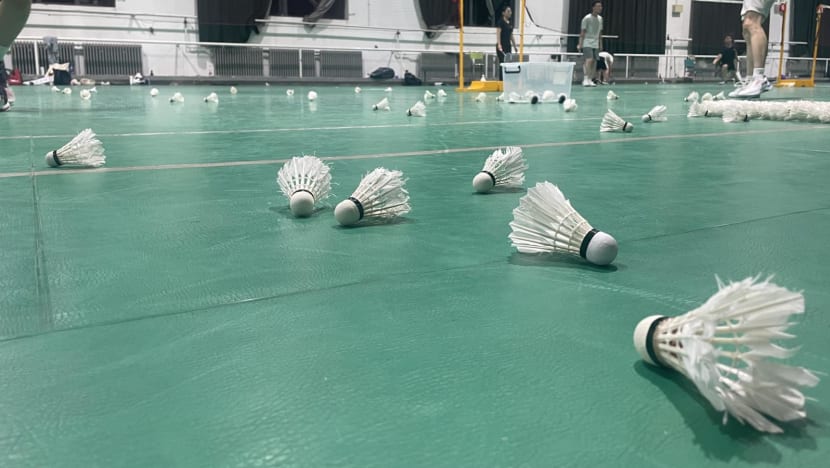
Rising shuttlecock prices in China have ruffled the feathers of badminton players, courting frustration. (Photo: Chow Zhengyang)

This audio is generated by an AI tool.
SINGAPORE: Mr Chow Zhengyang is not having a smashing good time on the badminton court.
“I can’t afford to play anymore,” said the frustrated 28-year-old Malaysian who has been studying in Beijing for 15 years, and plays badminton at least twice a week for leisure and to socialise.
Shuttlecocks are the reason. Prices have shot up, forcing him to spend an additional 180 yuan (US$24) a month on them, compared to his usual 280 yuan expenditure before the pandemic.
“I have been using RSL No 5 shuttlecock. It was 70 yuan before the pandemic, increased to 80, then 90, and now it’s 115 yuan,” complained the fresh graduate.

Shuttle prices in China have gone up by over 40 per cent in the past six months for some brands, sparking plenty of online talk and complaints in a country of 1.4 billion people where badminton is arguably seen as a national sport.
Industry sources told CNA that price hikes in goose and duck feathers are a key factor. They are used in feather shuttlecocks, which are by far the preferred choice compared to their synthetic counterparts.
But this has also been linked back to declining pork prices, highlighting the interconnectedness of supply chains and the knock-on effects due to disruption or change.
SOARING SHUTTLECOCK PRICES
At least three badminton companies, Yonex, RSL and Ling-Mei, issued notices at the end of June notifying distributors that shuttlecock prices would be raised due to increased production costs. CNA has seen these notices.
One popular model, the Yonex AS-05, was 210 yuan in February and has now increased to 275 yuan, a 30 per cent increase.
Other shuttle models now cost more as well - some by over 40 per cent - after the companies made price adjustments in April and June.
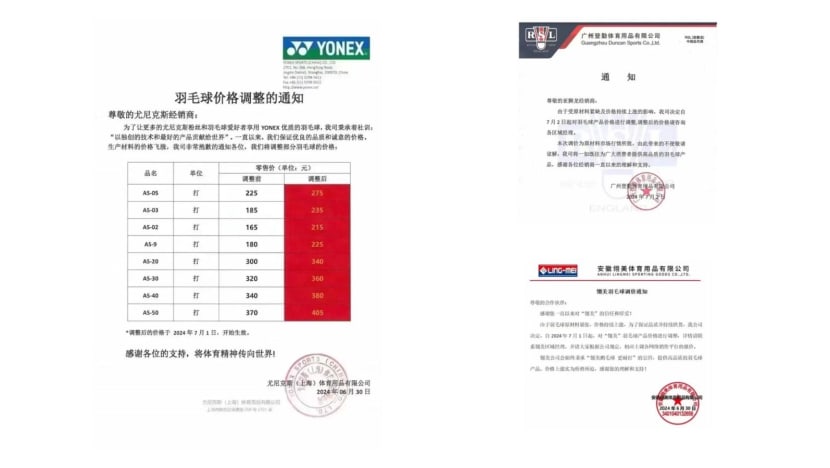
Staff from Shenzhen-based Chaopai Sporting Goods, a company specialising in making shuttlecocks, told CNA the price increase came into effect on Jul 1.
A pack of 12 shuttlecocks that previously cost around 200 yuan now retails for at least 10 yuan more.
The shuttlecock price hikes have sparked plenty of online discussion and jokes, with some Chinese netizens quipping that badminton has “become a royal sport”.
Hashtags like “a different you before and after the shuttlecock price hike” and “a mere 20,000 yuan monthly income will not support your badminton hobby” have attracted over 8 million views.
“My supervisor uses Chao Pai red special shuttlecocks (tournament grade). He changes them out as soon as the feathers fall off, even if they are not broken. I shall pick up the used ones next time,” quipped a Weibo user.
Another said: “I shall start using the plastic ones.” Yet another noted, “Maybe I should start raising geese.”
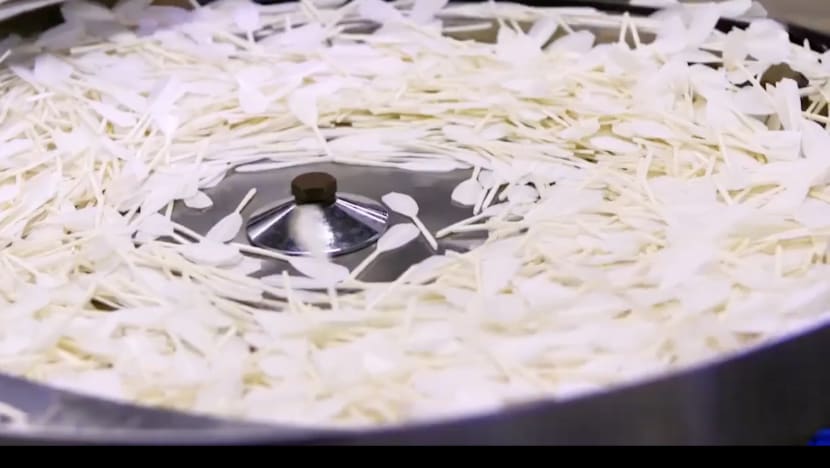
AN UNUSUAL SUSPECT
Industry sources told CNA the price hike is due to production materials costing more - specifically, goose and duck feathers.
This was backed up by a worker from Chaopai Sporting Goods, who spoke to this journalist over the phone. “The price of goose and duck feathers, which are the source material, increased,” the person explained.
Most of the notices from various shuttlecock brands have highlighted an increase in the cost of “source materials” as a reason for raising prices.
A shuttlecock is typically made from 16 overlapping feathers, usually goose or duck. They’re plucked from the animals, and manufacturers sort the feathers by width and curvature to ensure uniformity.
Falling pork prices could be a reason behind the price increase for duck and goose feathers, suggested Mr Sun Xiongfeng, founder of a badminton training facility.
“If pork prices increase, more butchery and farms will set an annual production goal depending on the prices of poultry. With a lower price point, pork will have higher consumer demand, resulting in fewer farmers willing to raise ducks and geese in comparison,” he explained.
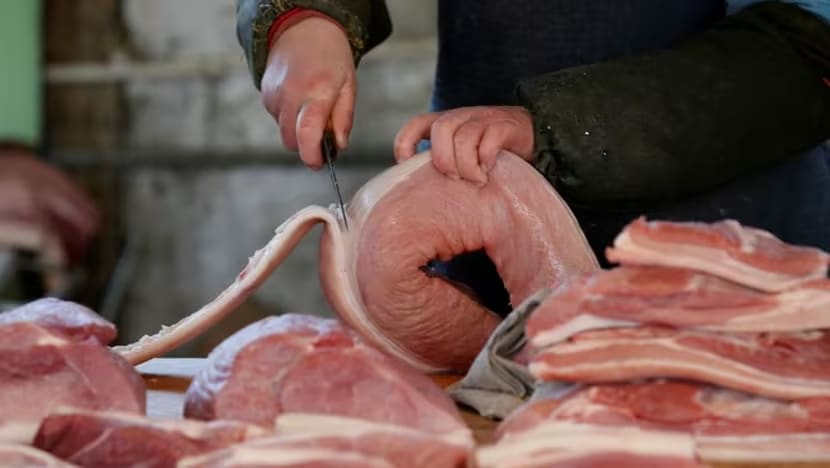
China is the world’s largest producer, consumer and importer of pork. The country consumes around 700 million pigs a year, according to official data.
According to Chinese government data, the price of live pigs has been on a continuous decline since November 2022, hitting a low of 14.95 yuan per kilogramme in March this year. That’s nearly half the 28 yuan per kilogramme logged right before the decline started.
Chief analyst for the pork trade at the Ministry of Agriculture and Rural Affairs Zhu Zengyong told local news outlet Economic Daily on Jul 2 that the price drop was due to factors like healthy levels of pig production capacity and abundant supply.
Related:
A feather collector in Hunan who did not want to be identified told CNA the price of feathers on the market is typically set by a vendor further down the supply chain.
She explained a common practice in the spice-loving province - first, many households buy or rear ducks and geese for food.
They then sell the feathers to collectors like her. These collectors then sell them to vendors, who distribute the feathers to factories for processing and eventual distribution. Any remainder is ground to make pig feed.
She shared that duck feathers currently cost around 20 yuan per 500 grammes while goose feathers are priced at 40 yuan per 500 grammes, as set by the vendors.
Prices have increased by 10 yuan and 20 yuan for duck and goose feathers respectively compared to the same time last year, she noted, likely to keep the supply coming.
The collector also pointed out that this means the vendors are likely similarly charging the factories more, which would have ripple effects on the eventual product cost.
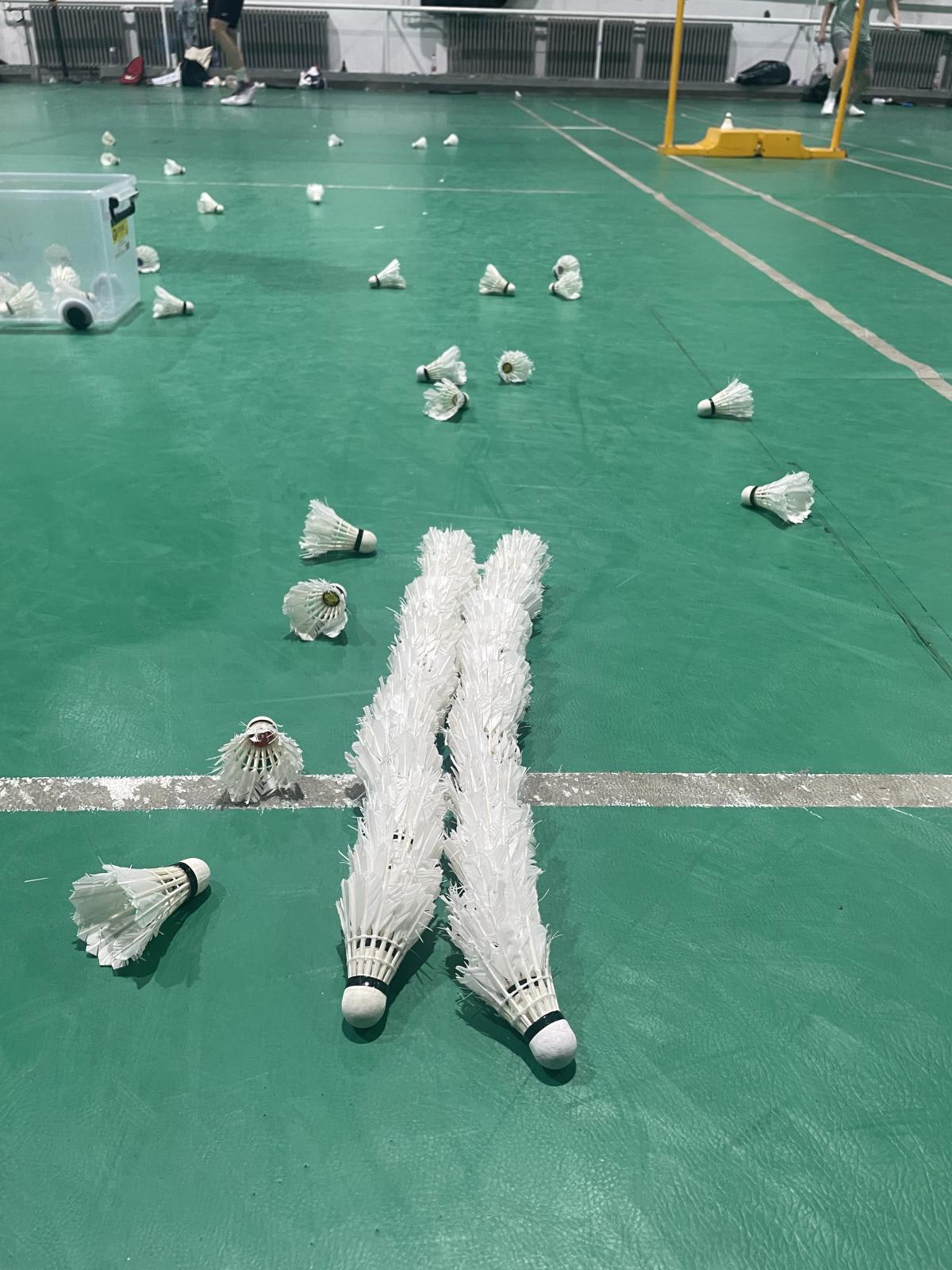
HIGHER DEMAND, HIGHER PRICES?
Mr Sun, the founder of a badminton training centre, said the price hike can partly be attributed to the increasing popularity of the sport.
In 2016, a sports industry development report by the Chinese General Administration of Sport stated that badminton is the second most participated sport in China, after running. It found that around 250 million people play badminton at least two hours a week.
“With more people interested in joining badminton as a sport, there is higher demand,” Mr Sun explained, adding that newer companies are joining to split the market share.
There are also bigger companies monopolising the market with bigger budgets, leaving smaller companies out in the cold.
With higher demand and lower supply, overall market prices will be driven up, Mr Sun suggested.
Higher prices aside, certain name-brand shuttlecocks also appear to be in short supply in some parts of China, frustrating badminton players.
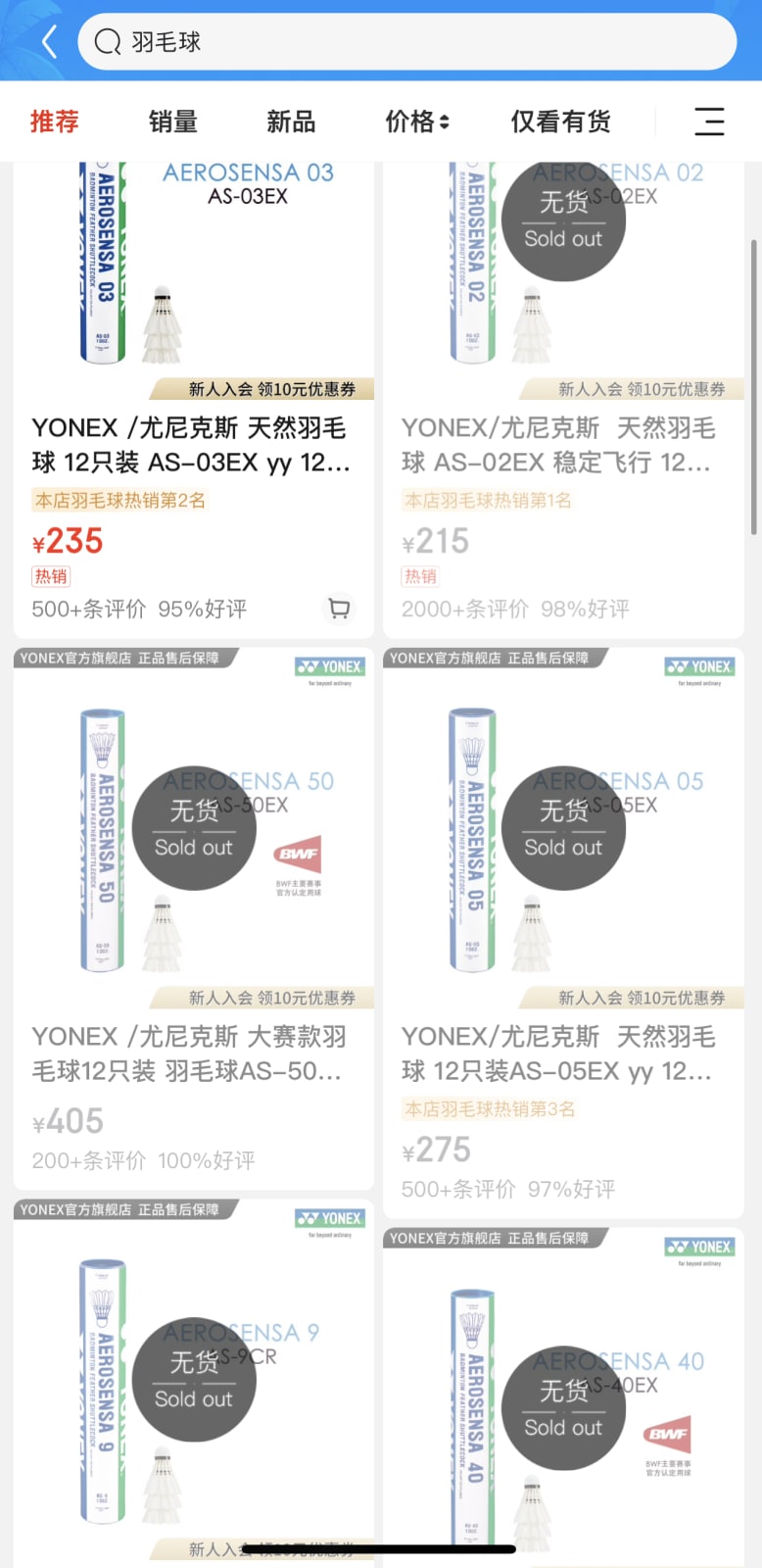
According to Business Value, a WeChat official media account from Beijing, in April and May, there was an online shuttlecock stock shortage from brands like Yonex, RSL and Wilson.
A distributor from Shandong said this was partly due to brand distributors stockpiling to increase profit, reported the media outlet.
It added that it had seen a group chat with 500 participants, where people were attempting to buy brandless shuttlecocks at 66 yuan. A person who was listing such shuttles at 54 yuan sold more than 1,000 tubes, according to Business Value.
Mr Chow, the recreational badminton player in Bejing, has observed this. He tried to look for lower-quality shuttlecocks costing around 80 yuan to 90 yuan, but they were still “hard to find”.
Even then, he doesn’t want to compromise on shuttle quality too much, as he believes a good and proper one is important to enjoying the sport.
In the meantime, Mr Chow has found a solution of sorts - playing doubles to split the cost with his peers.















